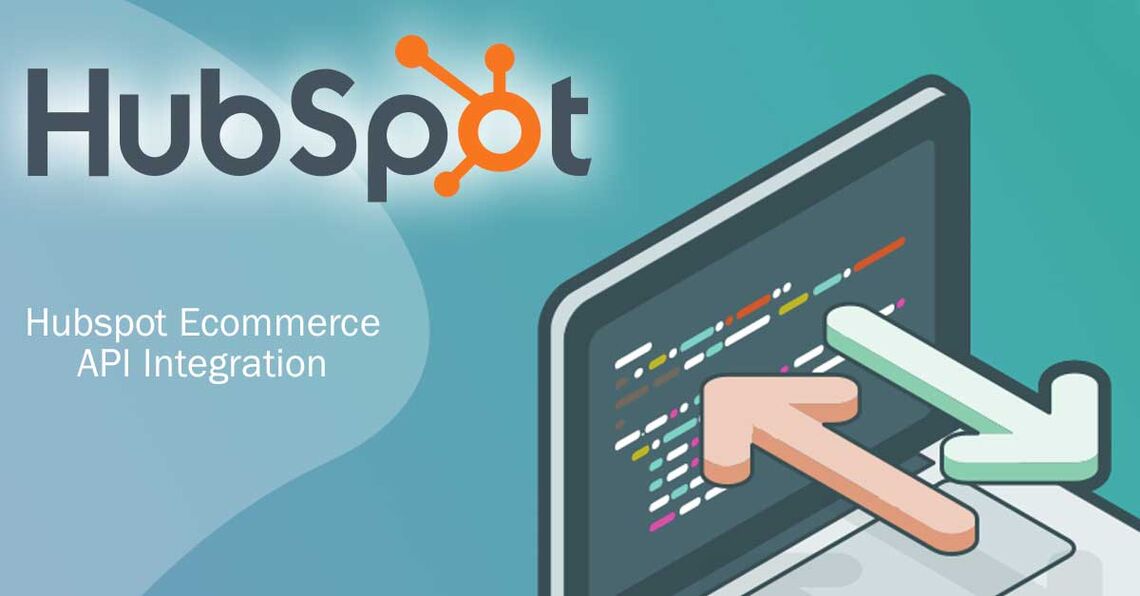Blog
How to Integrate the Hubspot API With Your Ecommerce Business
How can you integrate Hubspot with all of your different ecommerce platforms? Using the Hubspot API of course. Let's see how it's done.

How can you integrate Hubspot with all of your different ecommerce platforms? Using the Hubspot API of course. Let's see how it's done.


February 14th, 2023
How can you integrate Hubspot with all of your different ecommerce platforms? Using the Hubspot API of course. Let's see how it's done.
HubSpot is a powerful all-in-one marketing and sales platform that helps ecommerce merchants convert leads, close deals, analyze customer performance, create marketing campaigns, track leads, and so much more. It's easy to see that it’s an amazing tool to support your sales and marketing efforts. But what happens when Hubspot is only one tool in your greater ecommerce ecosystem?
Ecommerce data provides valuable insights into customer behavior and buying patterns. This data can be used to inform marketing strategies, and to develop strategies for increasing sales and profits. It's critical to capture this data and synchronize it with your CRM. With so many different platforms, is there an easy way to connect systems and share valuable business data? Yes, and this is where the Hubspot API comes in.
The HubSpot API is a powerful tool for programmatically accessing customer data and analytics. The HubSpot API features a wide range of endpoints and services. It's the best way for businesses to integrate data with HubSpot. The biggest help provided by the API is to automate repetitive tasks like data entry, customer synchronization, and lead entry. This automation immediately increases efficiency and reduces the risk of human error.
Most ecommerce businesses use multiple systems and platforms as part of their omnichannel ecosystem. This allows merchants the choice of powerful services but the information is fractured. It's important to connect the data and centralize the knowledge. A CRM platform like Hubspot collects customer data and tracks each customer’s journey through the sales process. This is crucial business information and you need to synchronize this data from your ecommerce site.
The HubSpot API provides the ability to integrate external data from applications and services into a single platform. With some custom development, you can ensure the data flow between all your platforms. For example, using the API you can automatically import invoices from Shopify, consolidate leads from your webform or save sales data from the team. Let's look at a common use case for Hubspot, importing customers from external sources.
Let's say we want to sync external customer contacts or leads into Hubspot. This is the perfect scenario for a custom API integration. HubSpot's API is great for building functional apps or integrations quickly and easily. Hubspot uses a standard REST convention including methods (POST, GET, PUT, DELETE) and error response codes. In our example, we want to sync our external customers into Hubspot so our Sales team can use this data for support and future business.
To use the Hubspot API, we must first setup the OAuth authentication to ensure access. Hubspot no longer supports simple API Key authentication so you have to create a developer account and associate a custom app integration with your needs. Once this process is complete, we can use the Hubspot API reference docs to find what we need. Looking at the documentation, we can see that Hubspot features different endpoints depending on your specific use case. The endpoints are grouped by Analytics, Automation, CMS, Conversation, CRM, Marketing, Files, Settings, and Webhooks. In our example, the contacts are part of the CRM, so we review the documentation to find the correct endpoint we need.
To create a contact in Hubspot, we use the contact endpoint. This endpoint is used to manipulate contacts from an external system into HubSpot. It looks something like this:
https://api.hubapi.com/crm/v3/objects/contacts
Depending on your use case, you will send a GET, DELETE or POST method to handle the process. In our case, we use the POST method to create a new contact. The POST will support a JSON body that contains the standard fields required to create a new contact. A very basic example of this JSON looks like this:
{"properties": { "company": "Company name", "email": "email@companydomain.com", "firstname": "First", "lastname": "Last", "phone": "(800) 555-1212", "website": "companyname.net" }}
The Hubspot API will return the response code and the results JSON which contains the new customer ID. The new contact is now in the system and we can repeat the process for additional contacts or add this process to a bigger integration.
The process is similar for the other CRM endpoints. Let's say we wanted to create a new Deal. We would then POST to the deals endpoint like this:
https://api.hubapi.com/crm/v3/objects/deals
Like the contact endpoint, we need to send the required data via the body JSON. Here is an example payload:
{ "properties": { "amount": "1500.00", "closedate": "2019-12-07T16:50:06.678Z", "dealname": "New deal", "pipeline": "default", "dealstage": "contractsent", "hubspot_owner_id": "910901" } }
As you can see from the examples above, with a little technology magic, you can ensure all your data is synchronized with your Hubspot site. You'll never miss another customer or business lead with a custom integration. Automated data transfer increases the efficiency of your business by ensuring the correct data is available to your team. This gives your store a competitive edge over others.
API integration projects are complicated if you don't have the right knowledge or experience. Luckily, we know this type of integration like the back of our hand.